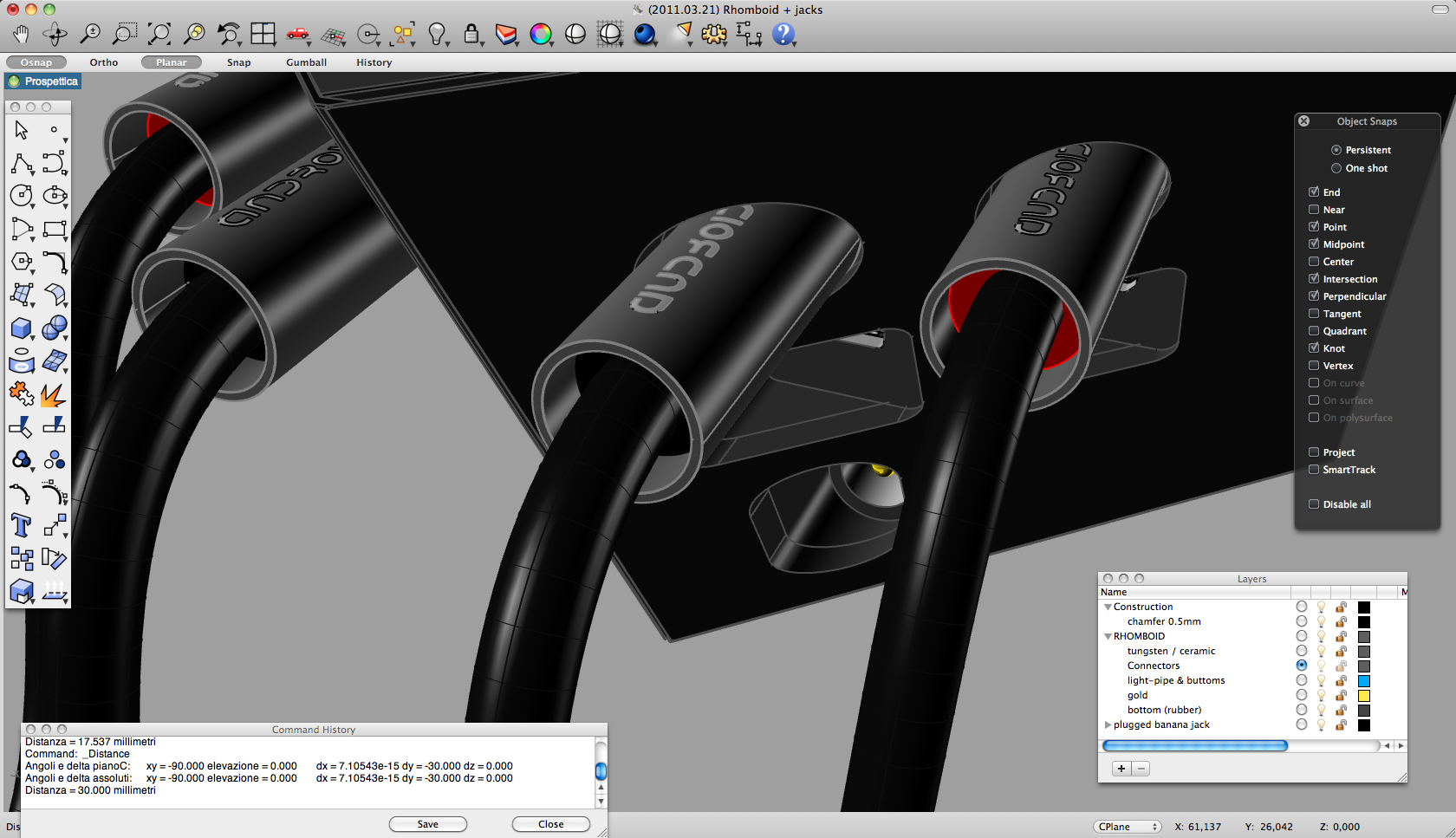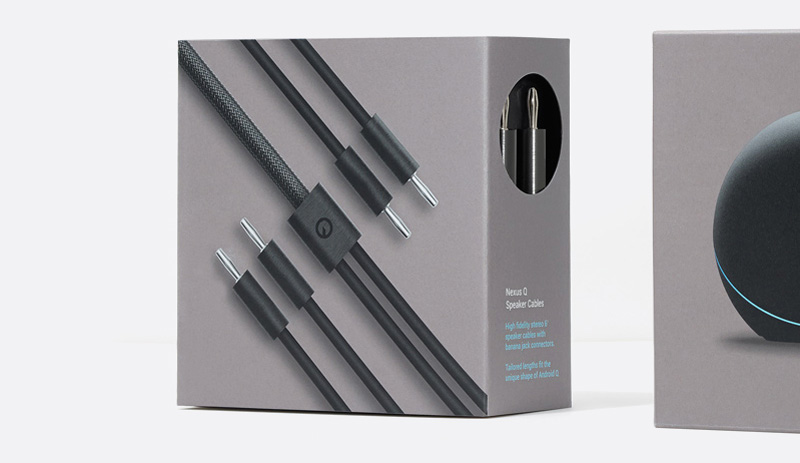During my experience at the San Francisco based Mike&Maaike design studio, I was involved in the development of what became the first non-mobile device in the Google Nexus product family: Google Nexus Q.
Nexus Q
The Nexus Q is a media streamer designed to connect to an HDTV or home stereo system to stream media and controlled by smartphones and tablets running Android.
While music is playing, the LED ring change in correspondence with the music waveforms and to give status information. The top half of the device can be rotated to change the audio volume.

My Role
I had the great opportunity to work for Google as part of a close-knit team of 4 designers. Together with them, I followed the development of the device (3d modelling, material composition, specs, prototyping, coordination with the engineering team) until its launch at the annual Google I/O event.
Among my tasks, I designed the custom audio and power cables, then sold separately as an accessory. The opportunity arose because we were not happy with the cables available on the market: we wanted the Nexus Q to shine in each of its details.
Power Cables
The first step was getting familiar with the US standard. Their power plugs feature two small flat connectors, whenever the European plug two, or sometimes three, bigger cylindrical pins.
The plastic handle of the US plug would have also been researched. For instance, what was the smallest dimensions I could go for?
Once I learned about the US plug requirements, I could sketch ideas and 3D-model my picks for internal review.

Design
The power plug is tapered, so to provide a better grip to the fingers. The cord itself connects to both extremities inside a cavity in the plugs. I feel it creates a neat detail, especially on the smaller plug.


Banana Plug
The audio cables would need to match the style of the overall design, while keeping their own signature. I wanted to deliver an audio cable that would communicate quality, durability and style.
The audio plugs features a cavity, like the power cable do. The typical red and black indicator for Left and Right channels are inside the cavity itself, so they are visible only when needed.
The finishing of the plugs is matte brushed aluminium. After the splitter, the cable is wrapped in a mesh shroud.



“The design team also tweaked the platform’s banana jacks, re-imagining an audio hardware standard first introduced in 1924.
We couldn’t find any that looked good, they’re all gold and gaudy, with terrible detailing. So we had to do a custom one to make it look right.”


Lauch
The Nexus Q was given away at no cost to attendees of Google I/O 2012. Shortly after the conference, it was listed for sale on Google Play store.
This mysterious, spherical, Android-powered computer was the world’s first social streaming device and Google’s first try at building its own hardware.
In July 2013, Google launched Chromecast, a device that reinterpreted the idea behind Nexus Q, which by then had been discontinued.


